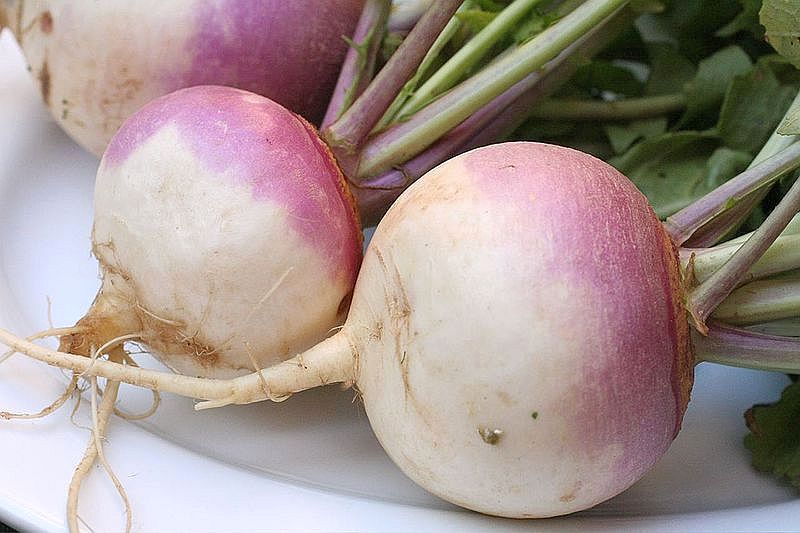
There are two vegetables I’d always see at the grocery store as a child, though now I see them on a less regular basis — turnips and rutabagas. They look a lot alike. Yet, they are different. How so?
What’s in a Name?
The official or Latin names of the turnip and rutabaga are (you really do want to know, right?),
- Turnip: Brassica rapa var. rapa
- Rutabaga: Brassica napobrassica
That doesn’t tell us much, at least most of us. The first word is the same, Brassica. This word refers is the genus of a large group of plants, plants in the mustard family. They are sometimes referred to as cruciferous vegetables. In addition to turnips and rutabagas, these include broccoli, cauliflower, and cabbage.
All of this comes as no surprise to most of us. So what are some of the differences?
Visual Difference
Generally, a turnip is round, smooth-skinned, and fairly free of blemishes, whereas a rutabaga resembles the shape of an old-fashioned kids’ top. A turnip is usually mostly white, whereas a rutabaga is colored roughly half and half oxblood and “cream”. Store bought rutabagas are frequently coated with edible wax.
Textural Difference
Small turnips are tender and mild and can be eaten raw. The flesh of the turnip is completely white. Turnips are often cooked and combined with mashed potatoes. When cooking rutabagas, peeling is desirable, but caution must be used not to overcook. This is, doubtless, because of the biological difference between these two vegetables.
Turnips and Rutabagas: The Biological Difference
Turnip and rutabaga are both different and similar; both are Brassica. The difference is, the rutabaga is a cross. It is a cross between a turnip and (believe it or not) a cabbage. It is easy to overcook cabbage into undesirable mush.
But How?
The first description of the rutabaga was made in the 17th Century.
To quote the Texas A&M AgriLife Extension Service, “Recent botanical detective work indicates that a rather rare kind of hybridization between some form of cabbage (18 chromosomes) and turnip (20 chromosomes) resulted in the new species, rutabaga (20 + 18 = 38 chromosomes).”
And you thought I was going to lecture you on grafting techniques!
Note: You might also enjoy Do Black Snakes and Copperheads Crossbreed?
References:
← Back to Food and Health
← Home